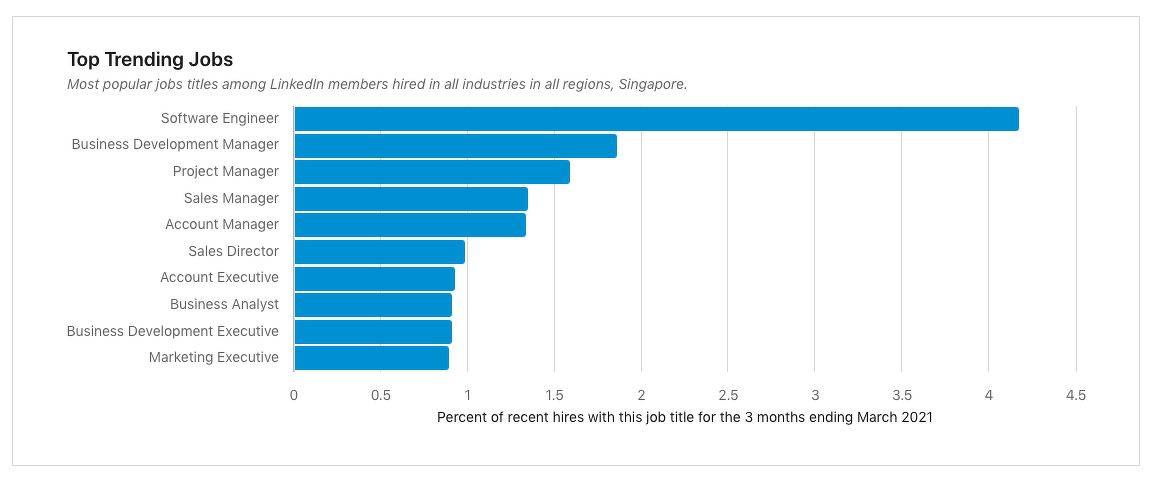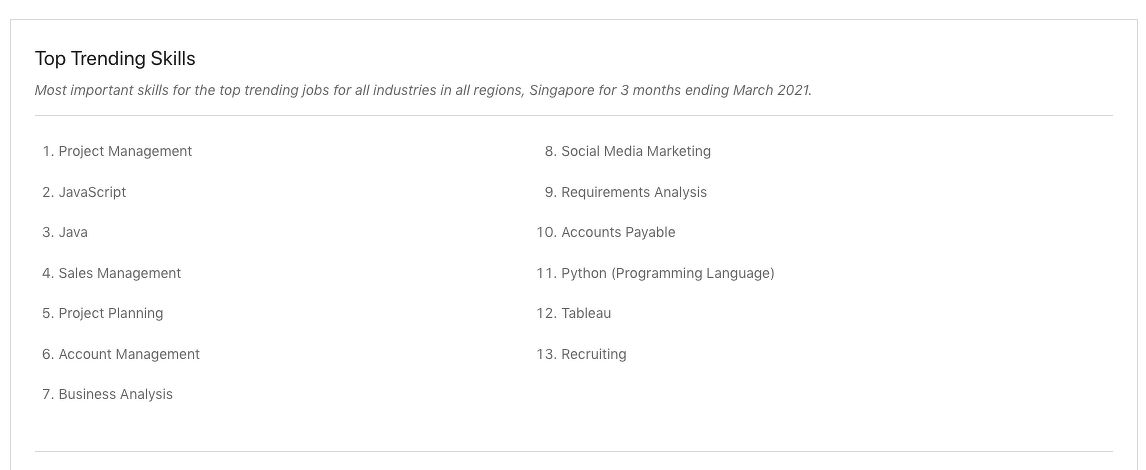While we are still not out of the Covid-19 woods, Asia Pacific is expected to recover from the pandemic’s economic impact faster than its counterparts. The region (excluding Japan and Australia) will grow by 7.3% this year, as compared to the US (6.2%) and Eurozone (3.8%), according to Asian Development Bank’s 2021 economic forecast.
Technology will be a key driver of Asia Pacific’s next wave of economic growth. But this can only be realised if the workforce in the region knows how to fully leverage technology to enhance business processes, deliver better customer experiences, and innovate.
The challenge here is that the demand for workers with those skills outstrips supply globally. According to McKinsey, more than 100 million workers worldwide will have to find a different occupation by 2030.
Many governments in the region have launched initiatives to narrow the skills gap. The Singapore government, for instance, has continually introduced measures to encourage individuals to enhance their employability and local companies to upskill and reskill their workers. It is also working with industry leaders and technology giants to support workforce transformation.
For instance, SkillsFuture Singapore (SSG) is working with industry leaders — including Shopee, Prudential, and Bosch Rexroth — to help SMEs in Singapore with skills development. Under the SkillsFuture Queen Bee programme, those leaders will provide a skills manager who will identify an SME’s needs and formulate a tailored training plan that will support the company’s business objectives and aspirations.
Another recent national skills initiative is #GetReadySG. Co-created by Microsoft and Generation Singapore — in partnership with Digital Industry Singapore, Infocomm Media Development Authority and SSG — the initiative hopes to reskill up to 1,000 job seekers over two years and match jobs for them within Microsoft’s partner companies.
See also: Companies shouldn’t overlook existing talent pools in the race to hire AI talent
“#GetReadySG learners will undergo blended learning boot camps and structured apprenticeships with participating employers. Additionally, Microsoft, LinkedIn and Generation will together recruit industry mentors to provide end-to-end emotional and career-based coaching for job seekers to drive greater integration and retention in the workplace,” says Kevin Wo, managing director of Microsoft Singapore.
Two-pronged approach to plug skills gap
Despite these efforts, many reports reveal that skills or talent shortage is one of the key barriers to adopting new technologies for digital transformation, such as artificial intelligence. This is no surprise as it “takes time to build a supply of talent, especially in niche or high-growth sectors”, says Guna Chellappan, general manager for Singapore at Red Hat, who is also the vice-president for the Cloud Computing Chapter at the Singapore Computer Society.
See also: Keys to blending AI agents and human employees for business growth
Organisations can take a two-pronged approach to address the technology talent crunch. A hybrid approach to IT management can be first used as a stopgap measure. “By identifying and segregating core functions they need to handle in-house, while outsourcing some responsibilities to managed service providers, businesses can ease the load on their IT teams,” Chellappan explains.
At the same time, organisations should make internal learning and development (L&D) a business priority. L&D may have been perceived as a cost centre in the past. But this should no longer be true in the digital economy as human capital is crucial for business success.
Moreover, employees today increasingly expect organisations to play an active role in their career development. Chan Chong Yang, managing director for Asean at Qlik, says: “Providing opportunities to upskill will boost employee retention. It helps employees recognise their organisation’s commitment to their career development, saves employers the need to constantly hire new staff with new skills, and improves overall productivity levels.”
The good news is that some companies in Singapore have taken concrete steps to help their employees gain new skills. In January, DBS Bank launched an in-house digital training institute to build a learning ecosystem that taps on external experts as well as internally developed content and certifications. This will enable its 5,000-strong technology workforce to acquire the latest technology skillsets, such as data analytics and application security, and immediately apply their new skills to relevant technology projects that the bank rolls out.
Futureproofing the workforce
As job requirements will continue to evolve as organisations digitally transform, upskilling will have to be an on-going effort.
Organisations may struggle to do so as they usually do not have visibility on the existing skills gap among their employees nor the skills needed to support future business success, says Microsoft’s Wo. “This is a long-term process that needs to be determined not by a single human resource function or department head, but rather the company’s collective leadership team,” he adds.
To stay ahead of the latest tech trends, click here for DigitalEdge Section
See also: Upskilling could add $6.5 bil and 5.3 mil jobs to global GDP by 2030
To help organisations overcome that challenge, Microsoft and LinkedIn are providing local labour market insights through LinkedIn’s Economic Graph. The tool captures every member, company, job and school to identify trends like talent migration, hiring rates, and in-demand skills by region. Organisations can therefore customise their training curriculum accordingly and be assured that their employees will remain relevant in the fast-changing business environment, Wo explains.
Photos: LinkedIn's Economic Graph

 Photos: LinkedIn's Economic Graph
Photos: LinkedIn's Economic GraphBesides offering training courses, organisations also need to ensure their culture allows employees to apply their new skills in their jobs. For example, companies looking to become data-driven can get their teams to start each discussion or proposal with a data point. This encourages employees to search for data and improves their comfort level in making data-driven decisions, says Qlik’s Chan.
Since organisations are only as good as their employees, they cannot be resilient if their workforces cannot adapt to the new demands of the business environment. Moreover, a World Economic Forum report in January said upskilling could boost Asia Pacific’s gross domestic product by 6.1% by 2030. Organisations that are building up critical workforce capabilities today will therefore be in a better position to address disruptions and capture new business opportunities in the future.
Photo: Unsplash




